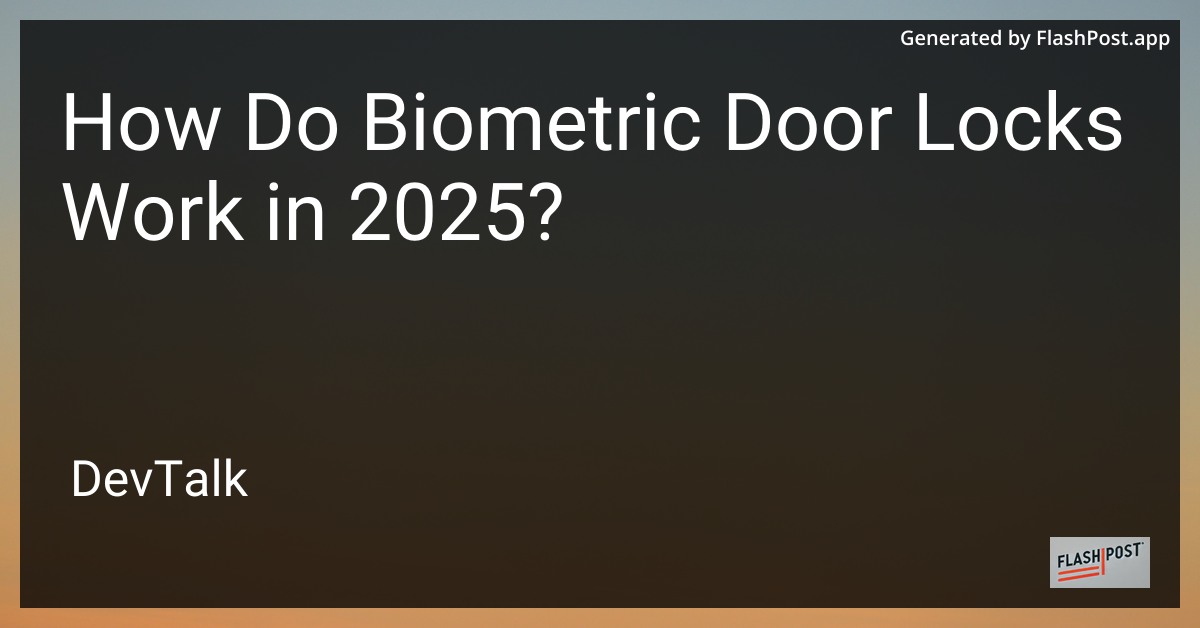How Do Biometric Door Locks Work in 2025?
 # How Do Biometric Door Locks Work in 2025?
# How Do Biometric Door Locks Work in 2025?
In an age where technology evolves at a breakneck speed, security systems, particularly biometric door locks, have made significant advancements by 2025.
These systems are not only a testament to modern security but also a fusion of convenience with cutting-edge technology. If you're considering upgrading your home security, understanding how these biometric locks function is crucial.
What are Biometric Door Locks?
Biometric door locks are advanced security systems that use unique biological traits to grant access. These traits may include fingerprints, facial recognition, retina scans, or even voice patterns. By 2025, these systems have become more sophisticated, offering heightened security and efficiency.
Key Features of Biometric Door Locks
-
Enhanced Fingerprint Technology: Modern biometric locks feature multi-point fingerprint scanning. By scanning multiple points on a fingerprint, these locks can differentiate between a genuine finger and an imitation, ensuring foolproof security.
-
Precision in Facial Recognition: Facial recognition systems in 2025 are powered by AI, allowing them to quickly identify authorized personnel even in varied lighting conditions. These systems can distinguish subtle differences among similar faces, thwarting security breaches effectively.
-
Integrated Multi-Modal Systems: Combining multiple biometric inputs, such as fingerprint and voice verification, adds an extra layer of security. This integration reduces reliance on just one form of authentication, making hacking exceedingly difficult.
-
Quick Response Time: As technology advances, the response time for these systems has significantly decreased. Biometric locks now grant access almost instantaneously, improving user experience without compromising security.
How Do Biometric Door Locks Work?
The process of biometric authentication generally involves three key steps:
-
Enrollment: The user's biometric data is initially scanned and stored in the system's database during the first setup. Each biometric lock can store data for multiple authorized users.
-
Storage: The biometric data isn’t stored as raw fingerprints or facial features. Instead, it's converted into encrypted digital data, ensuring that the information remains secure and private.
-
Authentication: When a user attempts to access the system, their biometric trait is scanned and compared against the stored data. A match will unlock the door, while any discrepancy will deny access.
Benefits of Using Biometric Door Locks
-
Superior Security: With their high accuracy and secure storage methods, biometric locks significantly reduce the risk of unauthorized access.
-
Ease of Use: Forget about fumbling for keys. A simple scan is all you need.
-
Audit Trails: Many systems provide logs of who enters and at what time, giving homeowners detailed access records.
-
Integrative Capabilities: By 2025, biometric locks can seamlessly connect with smart home systems, offering cohesive home management.
Considerations and Challenges
Despite their advantages, biometric locks are not without challenges. Environmental factors can affect scanning accuracy. Additionally, privacy concerns around biometric data storage must be addressed with rigorous data protection laws and practices.
Conclusion
Biometric door locks are shaping the future of home security in 2025, offering a reliable and convenient way to protect your home. As these technologies continue to evolve, ensuring they integrate seamlessly with other smart home features will be key to optimizing functionality.
For more home enhancement ideas, check out our pages on affordable home printers and home gym storage solutions.
By understanding how these systems work and their potential challenges, you can make informed decisions about protecting your home with the latest technologies.